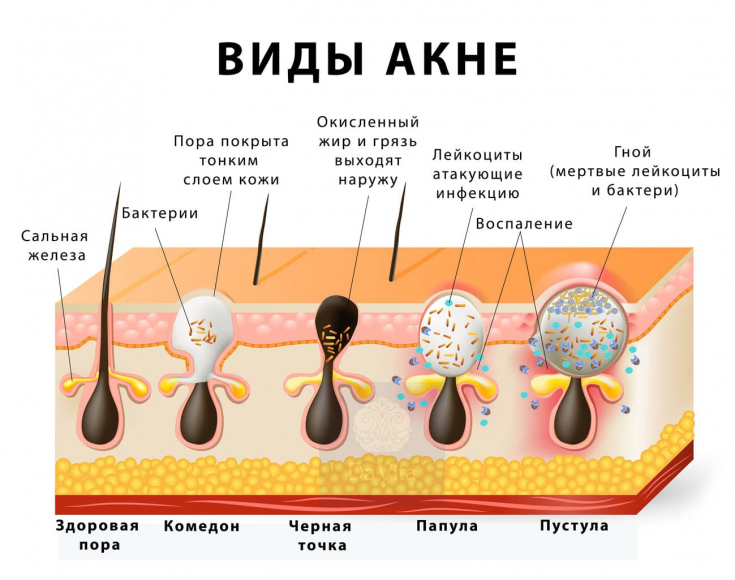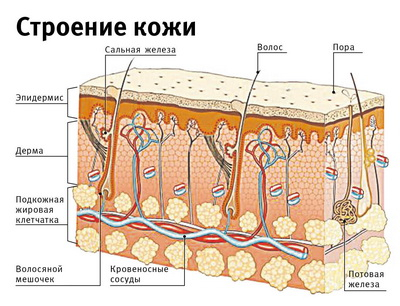Acne vulgaris — a common disease of the pilosebaceous unit, affecting approximately 85% of people aged 12 to 25 in the United States. Acne often persists into adulthood, with 26% of women and 12% of men reporting acne after the age of 40.
Worldwide, acne ranks as the 8th most common disease in the world, with the highest rates in Western Europe, high-income North America and southern Latin America.
In the article estet-portal.com you can get acquainted in detail with topical methods of therapy based on modern evidence of effectiveness.
Component #1 — retinoid
Retinoids are comedolytic, normalize desquamation in the follicular infundibulum, and have anti-inflammatory properties. In the US, three retinoids are used in patients with acne: tretinoin, adapalene, and tazarotene.
All retinoids have a slight photosensitizing ability, but sunscreen can easily deal with this situation.
Clinical Research:
• When used as monotherapy, 0.025% tretinoin gel resulted in a reduction in the number of lesions by approximately 40% from baseline up to 84 days.
• In a follicular biopsy, tretinoin 0.1% cream resulted in a 50% reduction in microcomedones at 6 weeks and an 80% reduction at 12 weeks.
Standard tretinoin preparations cannot be co-administered with benzoyl peroxide.
Comparative tests have shown that adapalene 0.1% gel has a similar potency to tretinoin 0.025% gel with a better safety profile.

In a randomized trial, 0.3% adapalene gel was more effective than 0.1% adapalene gel (45.3% and 41.8% reduction in total acne, respectively).
Adapalene is also lightfast and can be used with benzoyl peroxide.
Combination formulations of 0.3% adapalene and 2.5% benzoyl peroxide gel were superior.
Tazarotene 0.1% gel has been shown to have superior efficacy compared to 0.1% adapalene gel and 0. 1% tretinoin gel.
Tazarotene is strictly prohibited for pregnant and lactating women.
Follow us on Instagram
Component #2 — antimicrobial agent

Benzoyl peroxide is very effective in reducing C. acnes by releasing oxygen free radicals without inducing microbial resistance. Higher concentrations (e.g. 10% vs 5%) may result in increased irritation without a significant increase in antimicrobial effect.
Latex allergy: who is at risk of a pathological reaction to an allergen
Antibiotics, primarily clindamycin and erythromycin, also reduce C. acnes. However, bacterial resistance is widespread. Therefore, antibiotics should not be used as monotherapy, but in combination with other agents.
The combination of benzoyl peroxide with a topical antibiotic has been shown to reduce antibiotic-resistant strains of C. acnes and be more effective.
Patients with acne disease should limit washing to 2 times a day, use gentle cleansers for sensitive skin, and avoid scrubs.
Component #3 — other topical preparations for the treatment of acne
1) Dapson antileprosy 5% gel has been shown to be clinically effective in patients with inflammatory acne. Often used as first-line therapy in patients with sensitive skin, acne-prone women with darker skin tones.
Glucose-6-phosphate dehydrogenase testing is not considered necessary prior to topical use, even in high-risk groups.
2) Azelaic (dicarboxylic acid), which is used in acne patients primarily for its ability to alleviate post-inflammatory hyperpigmentation, may also be useful in patients with mild inflammatory and comedonal acne. It reverses abnormal keratinization and inhibits the growth of C. acnes.
3) Despite very limited clinical data, salicylic acid — a comedolytic agent available in many different formulations is widely available for the treatment of acne. It is considered to be less effective than a topical retinoid, but has an acceptable safety profile and is a good initial OTC drug.
Thus, well-chosen acne therapy, taking into account the severity of the disease and the appearance of undesirable effects, can level the problem of adolescents and many young people.
Thank you for staying with estet-portal.com. Read other interesting articles in the "Dermatology" section. You may be interested in Antibiotics in the treatment of acne: to be or not to be







Add a comment